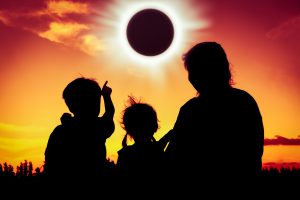
Quick Facts About the August 21st, 2017 Solar Eclipse
You know there’s a solar eclipse taking place this month, right? In case this is the first you’re hearing of it, let us bring you up to speed in the quickest way possible. We promise you, it’s an event you won’t want to miss.
What is It?
A solar eclipse occurs when the moon moves between the Earth and the sun, blocking sunlight from reaching the parts of the Earth directly beneath its shadow. Sometimes the moon only blocks part of the sun, resulting in a partial eclipse. Other times, such as what will happen this year, the moon completely blocks the sun, resulting in a total solar eclipse.
When Can I See It?
According to NASA (eclipse2017.nasa.gov), the solar eclipse will happen on August 21, 2017. It will begin in Lincoln Beach, Oregon at approximately 9:05 a.m. Pacific time and move southeast across the country, finally ending in Charleston, South Carolina at about 2:48 p.m. Eastern time. The amount of time the sunlight will be completely blocked is quite short. The longest period of totality is expected to happen above Carbondale, Illinois, where the eclipse will last two minutes and 40 seconds, says NASA. Other areas may experience the full eclipse for less than 60 seconds.
Where Will It Be?
The eclipse begins in Oregon and will cut a 70-mile-wide path across Idaho, Wyoming, Montana, Nebraska, Iowa, Kansas, Missouri, Illinois, Kentucky, Tennessee, Georgia, and North and South Carolina. Anyone outside this path will still be able to see the eclipse but won’t see it in its totality. It’s a good idea to travel to a place within this path. Check the weather forecast ahead of time to avoid cloud cover, which will obscure your view of this rare event.
How do I View It?
It’s extremely important to wear specially-made, protective eyewear while watching the solar eclipse. The American Astronomical Society (eclipse.aas.org) says you must wear glasses that meet certification requirements and are rated ISO 12312-2. Because some manufacturers are making counterfeit glasses that say they meet these standards when they really don’t, the AAS has a list of approved suppliers on its website, which includes 7-Eleven, Walmart, Lowe’s and Kirklands.
You must wear your protective glasses during the whole eclipse event except during the few moments of totality, when only the corona of the sun is visible behind the moon. If you aren’t in the path of totality, you must wear your glasses during the whole event. Ignoring this caution can result in significant eye damage.
Why is this Event So Special?
While solar eclipses happen nearly every year in some part of the earth, this is the first time a solar eclipse has crossed the United States from coast to coast since 1918, according to ABC News (abcnews.go.com). Additionally, it’s the first time a total solar eclipse has been exclusively viewable in the U.S. since 1776. Millions of Americans will be able to watch this spectacle without leaving their own backyards.
Are you excited about the solar eclipse now? We are, too. Get a good pair of protective glasses for each of your family members, pick a spot in the path of the eclipse, and sit back to watch a wondrous and truly amazing natural event take place.
